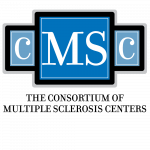Background:
Magnetic resonance imaging (MRI) in the context of routine care is an important tool that can inform clinical decisions in multiple sclerosis (MS). A better understanding is needed of how MRI is used in real-world settings to monitor patients with MS, and whether this adheres to standard of care recommendations, such as the Consortium of MS Centers MRI Protocol and Clinical Guidelines.
Objectives:
To characterize the acquisition of routine brain MRI in patients with MS across different sites in the US.
Methods:
FlywheelMS is a novel, patient-centered study that aims to extract, retrieve and digitize health information in existing health records of people with a confirmed diagnosis of MS. Brain MRIs were retrieved, and summary statistics were computed to describe the sessions, including the interval between sessions, scanner field strengths, and acquired sequences. Sequences were classified as T1 weighted (T1w), T2 weighted (T2w), diffusion and other. T1w and T2w images were categorized as isotropic and anisotropic based on their resolution, and the relative slice thicknesses were reported. The number of MRI sessions with postcontrast T1w was also assessed.
Results:
A total of 6,712 MRI sessions were retrieved from the first 1,287 patients (age at consent, 49±11 years; female, 80%) enrolled in FlywheelMS. For data captured between 1999 and 2020, the mean number of MRI sessions per patient was 5.2±4.5, with an average time between sessions of 502.8±452 days. Sessions were acquired using mainly 1.5T scanners (65.8%), followed by 3T (26.4%) and lowerfield strength magnets (3.8%; not available, 4%). The total number of sequences collected was 51,912 with an average number of 7.7±3.5 per session. Those sequences were mainly T1w and T2w images (43% and 38%, respectively), followed by diffusion images (16%) and other types (3%; e.g. T2* or susceptibility-weighted imaging). T1w and T2w images were mainly anisotropic (T1w, 95%; T2w, 98%) with a higher slice thickness (T1w and T2w: anisotropic vs isotropic, 4.0±1.1 vs 1.0±0.1 mm). A total of 73% of the overall MRI sessions (91% of the patients) had at least one postcontrast T1w image.
Conclusions:
Preliminary analysis of routine MRI in Flywheel MS suggests partial compliance to clinical guidelines. Once the data collection is complete, the results will help further characterize routine MRI, the degree to which care complies with existing recommendations and the resulting impact on patient outcomes.
[learn_press_profile]
